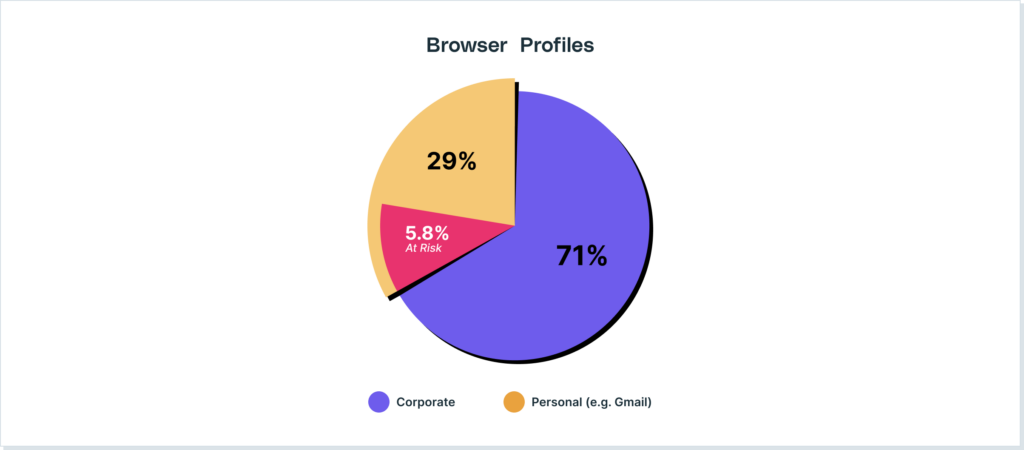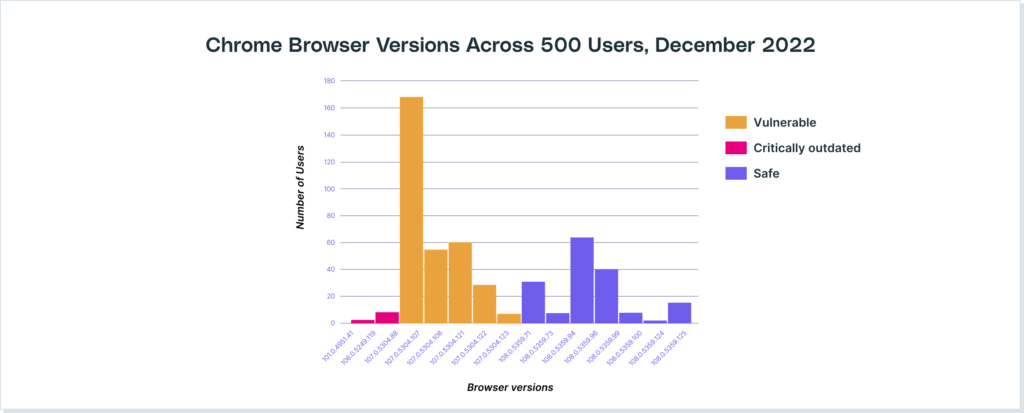As we spend more time online, the security of our browsers has become increasingly important. Our browsers are the gatekeepers to the vast amount of information available on the internet, and protecting them from threats is crucial to keeping organizations’ data safe. In the “2023 Browser Security Annual Report” (download the full report here), we enclose some of the fastest-growing sources of threats in today’s corporate environment – the browser, and the key ways to enhance its security and protect your organization from emerging threats.
The report contains exclusive insights we developed internally based on our own data. By combining this data with a number of other sources, the report provides a unique and comprehensive overview of 2022 browser security and an outlook into 2023.
2022 – The Year that Browser Security Became a “Must Have”
Browser security is becoming a major concern for Enterprises. With the increasing use of Software-as-a-service (SaaS) applications, the performance of financial transactions, and the storage of sensitive information, the need for secure browsing was at an all-time high.
Below presented are some of the top threats related to browsers that organizations had to deal with during 2022:
- Personal Browser Profile Vulnerabilities introduce a new risk into organizations. Our original data shows that 29% of in-house employees are using their personal profiles when accessing SaaS applications, putting the organization at risk of password exfiltration or importing malicious extensions into the enterprise.
- Browsers are Outdated despite the browser companies’ best attempts to prompt updates. Our data shows that 50+% of browsers are vulnerable to CVEs because they are not up-to-date.
- Shadow IT continues to be a problem. While this is generally known, LayerX data shows that 31% of apps are connected to non-corporate identities, i.e are at higher risk.
- Phishing and Malware Attacks are a growing concern all over the world, and the use of browsers can make these types of attacks even more dangerous. Phishing attacks are typically carried out by emails or text messages that contain links to look-alike fake websites. These websites are designed as legitimate sites to lure users into entering corporate credentials. Once the user enters their data, it is then captured by the attacker and can be used for fraudulent activities. Malware attacks, on the other hand, are typically carried out through malicious software downloaded to a user’s device. This software can be used to steal sensitive personal data, install adware, or even take control of a user’s device.
- Data Leakage also played a vast role in the past year as one of the top reasons for corporate’s financial losses or brand-name abuse. Browsers are known as vulnerable points for data leakage. Due to the fact individuals usually use their work computer and browser for their personal needs, it might lead to the compromise of both private and corporate data.
Outdated Browsers lack the latest security updates and bug fixes, making them vulnerable to exploits and cyber-attacks. Cybercriminals can take advantage of vulnerabilities in outdated browsers to steal sensitive information, therefore, the faster the browser is updated, the lower the risk. Additionally, outdated browsers may not be able to properly display websites, leaving users open to phishing scams and other types of malicious content.
Throughout 2022, all the above-mentioned risks, and many others as described in the annual report, came into reality – a significant number of companies suffered severe data loss from attacks that were performed via unprotected browsers. The latest attack was published in December 2022, when it was brought out that hackers have gained access to a third-party cloud storage service of LastPass. The cloud contained customer data and the cyber-attack greatly influenced the company’s reputation.
2023 – What to Expect
As to 2023, browser security becomes a major priority. As technology continues to advance, so do the threats to our online security. In the world of browsers, this is no exception.
The threats are here to stay. Although phishing attacks have been around for a while, they continue to evolve and become more sophisticated. The growing complexity of these designs and attacks will increase security blind spots and the need to mitigate them. Additionally, SaaS plays a crucial role in securing web browsers – as the use of SaaS continues to grow, so are the threats and the difficulty to manage them.
As a security leader within your company, it is important to ensure that your organization’s online presence is secure. This involves protecting sensitive information and maintaining the privacy of your employees and customers. Some general recommendations for enhancing the security of your organization’s web browsers are a must, such as implementing browser policies, educating employees on browser security, installing endpoint protection, etc. Moreover, pay attention to the fact SaaS is a game-changer for productivity and will continue to grow. Embrace this transformation, but make sure security is a priority. Consolidating your SaaS security controls in the browser, the sole access point for both authorized users and malicious actors is the most logical cybersecurity strategy.
Conclusion
Our “2023 Browser Security Annual Report” presents insights into the browser, the fastest-growing risk in the corporate world, and outlines ways to improve its security to protect against increasing threats. The report is based on a variety of sources, including our original data here at LayerX.
The safety of our browsers is crucial in today’s digital age as we rely heavily on the internet for our company needs. 2022 saw significant challenges in terms of browser security, with phishing and malware attacks, data leakage, and outdated browsers and plug-ins being some of the biggest threats. 2023 brings in new advancements, but also new threats, as the complexity of phishing attacks continues to increase, and SaaS usage grows. Organizations must take the necessary measures to enhance their browser security and protect sensitive information. This includes implementing browser policies, educating employees, and consolidating SaaS security controls in the browser.
We invite you to read our full report at the following link.






